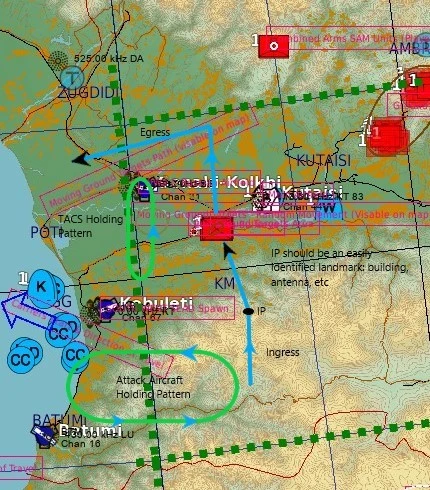Theater Air Control System
The TACS will be the command and control for the duration of the AI mission in that area, and therefore will control and grant clearance to attack within the target area. It is their job to ensure the incoming aircraft are vectored to the correct target area.
-
Once clearance to attack has been given, they need to monitor the ingress/egress of all attack aircraft.
-
They will ensure that there is adequate spacing between attack aircraft during each run.
-
After each attack run, they will perform a BDA and determine if another attack on target is required.
-
TACS will designate a holding pattern location (with specific altitudes for each aircraft/flight), the approach/ingress vector, the egress vector, and exit corridor to the holding pattern.
-
Holding pattern should be within 3-5 minutes of the ingress vector, when safely possible.
-
Ingress/egress vector must take weather and terrain into account, as well as the locations of any anti-air equipment.

A pre-specified TACS is not necessary if the AI mission flight is four or less aircraft. The TACS duty will be designated by the flight lead (meaning it does not necessarily have to be the flight lead, but someone they designate within the flight).
- TACS will put themselves in a holding pattern that safely allows them to direct and control all aspects of the AI mission.
- TACS will make the final determination for the completion of the AI mission on that target area.
Appendix A: Acronyms
- AI: Air Interdiction
- CAS: Close Air Support
- TACS: Theater Air Control System
- BDA: Battle Damage Assessment